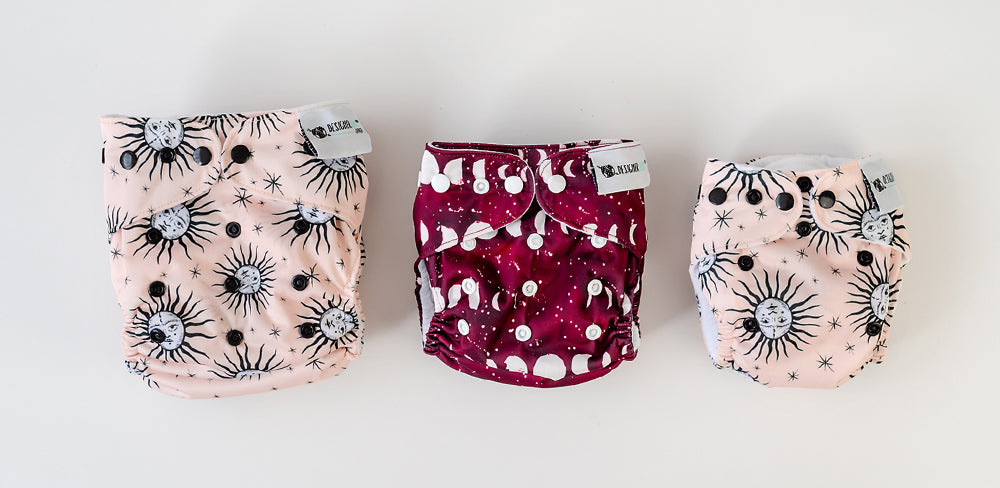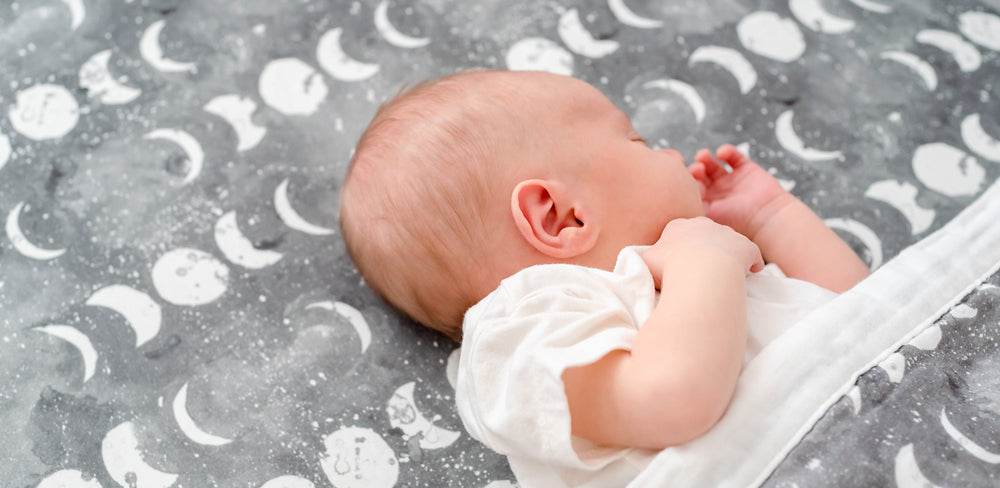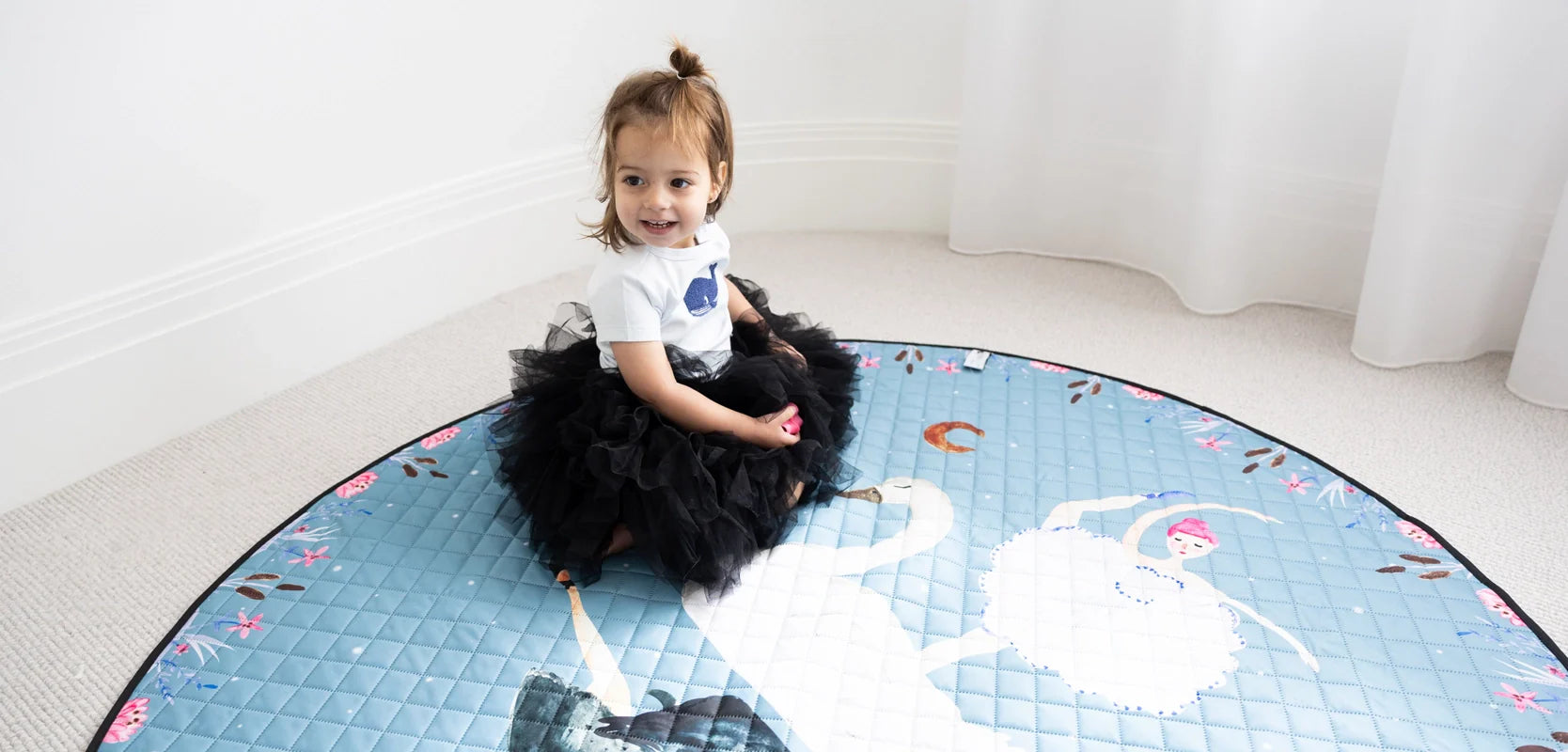New to cloth or thinking about converting?

Some common reusable nappy questions answered by our cloth nappy experts.
Changes like this can often be uncomfortable, especially if you have never considered alternatives to your usual habits. We have prepared some information below to answer some of the questions you may have if this is the first time you have considered cloth nappies.
How often should reusable nappies be changed?
We recommend changing your reusable nappies as often as you change your disposable nappies.
How long can you leave a reusable nappy on for?
Some cloth nappy users will find they won’t need to change as often when they use cloth nappies. This is because cloth nappies can keep your little one dry without over drying the skin meaning the nappy is gentler on the skin for longer.
 Are reusable nappies better for night time?
Are reusable nappies better for night time?
Because the absorbency can be tailored for your child’s output, using cloth overnight can give you confidence that you won’t end up with any nappy blow-outs.
Why is it important to minimise disposable nappies and other sanitary products going into your rubbish bin?
When we become parents for the first time we often think about the type of world our little ones will inherit from us and the things that we can do to have a positive influence on this. Waste is becoming a larger environmental issue that you can have a direct impact on by choosing what does and doesn’t go into your bin.
The Country
The ABC news estimated in 2015 that at least 2 BILLION disposable nappies go into landfill bins each year across Australia. This equates to 5.6 million disposable nappies per day.
The Individual
Using cloth even part time will prevent a number of disposable nappies from going to landfill. Once in landfill one disposable nappy takes 500 years to decompose and each child will use, on average, 6-6,500 nappies before they use the toilet consistently. Those 6,500 nappies will generate one tonne of plastic waste.
Michael Jansen, City of Casey manager of sustainability and waste, said every baby in cloth nappies prevented about 667 kilograms of disposable nappies from reaching landfill every year.

How do new parents have the time to wash and dry their nappies? Isn’t cloth just creating more work?
This is something that new parents contemplating cloth nappies often hear from well meaning friends and family. They are probably recalling days of stinky nappy storage, plastic pilchers, and bleach filled nappy buckets. The good news is that modern cloth nappies are a far cry from their older safety pinned counterparts - there is no stinky storage, plastic pilchers, or nappy soaking.
Caring for your modern cloth nappies shouldn’t take a lot of time as they do not require soaking and should be washed in your machine like any other clothing item.
Unlike their older counterparts when stored correctly your modern cloth nappies should not generate any smells. It is recommended to store in an open basket with plenty of airflow until it is time to wash which will prevent smelly ammonia from forming. Every second day load your washing machine with your nappies and run your shortest wash followed by your longest wash and dry on the line or clothes airer. It is as simple as that.
Do I need to buy a large collection of nappies to get started?
For some families they may choose to start small by replacing a few disposable nappies a day, and others may choose to move to full time use. Every reusable product used directly reduces waste going into landfills and there is 1 less nappy in your bin so there is no one size fits all approach. You can start small and see how you go.
I'm worried about the cost of laundering my nappies. What about the detergent, water and power usage?
Water
The cost per wash is estimated to be between $0.16 - $0.92 per wash depending on the type of washing machine.
The cost over 3 years is estimated to be approximately $88-$505. This is based on the average cost of water being $0.0023-$0.0050/L.
Electricity
The electricity per cycle is estimated at 0.11-1.27kWh for top loaders and 0.15-2.4kWh for front loaders if washing at 40℃. Costs will vary per provider and using the average 2021 Victorian rate of $0.21 per kWh the total cost per cycle for a front loader could be estimated at:
- 1.88kWh at 40℃, at a cost of $0.21 per kWh = $0.394 per nappy load. Washing every second day for 3 years (549 washed) brings the total cost to $217.
Detergent Costs
You do not need to purchase special detergents for your cloth nappy laundering as mainstream detergents should be fully washed out of your items by the end of your wash. Per kg it may cost you $0.25 for cheaper detergents up to $0.81 for ‘ultimate’ detergents per load of washing. 3 years of washing every second day will bring total costs to approximately $138 - $445.
Based on the calculations above the average cost per year of laundering your nappies would be $268 or $22 per month.
Information sourced from https://cleanclothnappies.com/economics-of-cloth-vs-disposables/ and https://www.canstarblue.com.au/electricity/electricity-costs-kwh/

Should I be worried about nappy rash when switching to cloth?
The chemicals used in disposable nappies are designed to draw in moisture so that it does not sit against your little one’s skin. For some babies this can mean that moisture is drawn out of the skin as well and can cause dryness and irritation. For this reason you may find yourself using barrier creams and lotions every nappy change to try and protect your little one’s skin from the disposable nappy.
Because cloth nappies are free from the chemicals found in disposable nappies they can be much gentler on their skin. Many families who use cloth find that they do not need to regularly use barrier creams or lotions on their babies as a result of this which can lead to cost savings on expensive nappy creams. Designer bums tops all of its nappy inserts with a vegan suede cloth lining which is silky soft against your little ones skin and will draw away moisture without drying out your little ones skin.
If you are curious about cloth this is a great opportunity to dip your toe into the water and make a personal and direct impact on what goes into landfill.
Further Reading:
If you enjoyed this article you may also want to check out A Beginners Guide to Reusable Nappies where we talk about how many Nappies you need for your stash, how to wash your Cloth Nappies, and how to construct your Cloth Nappies.







